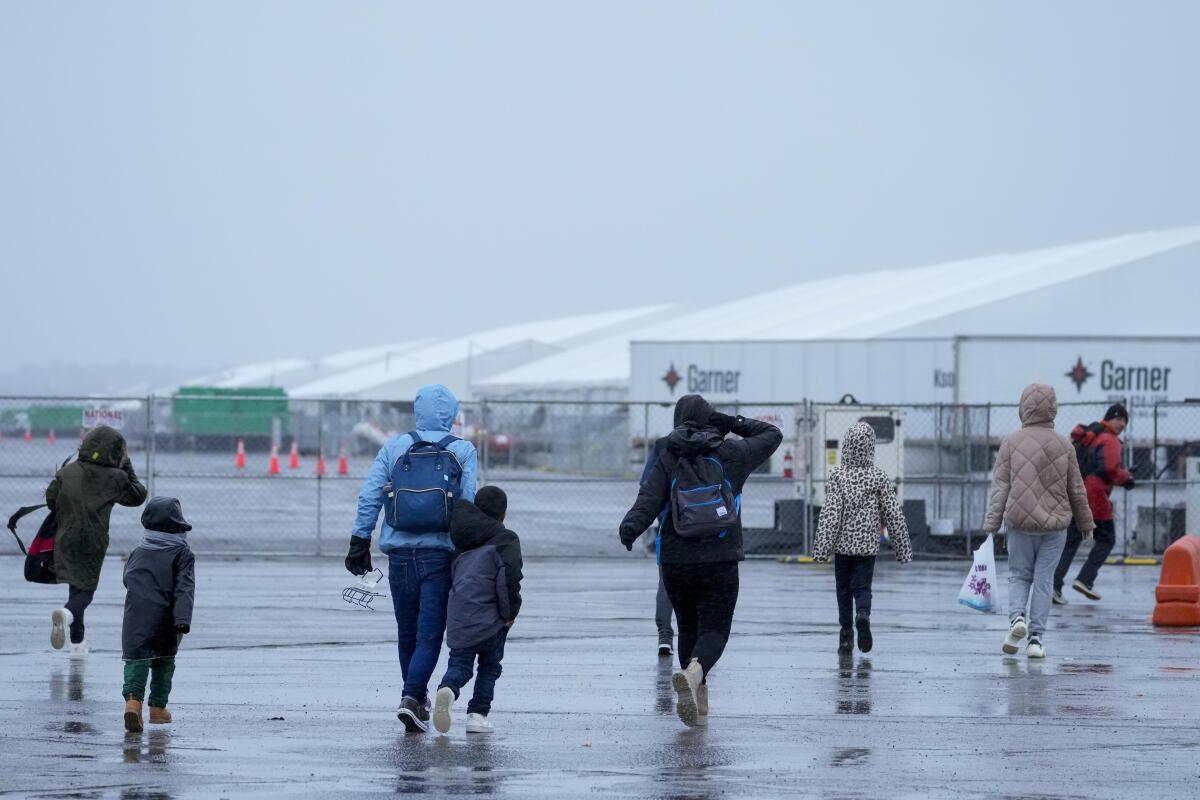New York City’s makeshift migrant encampment, established on Floyd Bennett Field’s Runway 19, faced a critical test this week as storm forecasts prompted an emergency evacuation. The complex, housing nearly 2,000 migrants, including families with children, was swiftly relocated to a nearby high school, eliciting both concerns and criticisms. The storm evacuation brought attention to the challenges of housing migrants in temporary facilities, especially in flood-prone areas, and its implications on the education of local students.

Immigrants Face National Backlash and Threats
The storm-triggered evacuation quickly escalated into a focal point of the national debate on immigration. Conservative politicians and pundits seized on the incident, arguing that the needs of foreign migrants were prioritized over American children. The school, which transitioned to remote learning due to the evacuation, received threatening phone calls and even a bomb threat. The episode intensified criticism of the city’s response to the immigration surge, spotlighting the strain on resources and the reliance on makeshift accommodations in major cities across the country.
Struggles in Temporary Housing
Floyd Bennett Field, chosen as a temporary shelter, faced scrutiny for its susceptibility to flooding, storms, and winds. Critics, including local politicians and migrants, argued that such locations are not suitable for long-term housing solutions. Migrants housed in the facility reported challenges such as uncomfortable sleeping arrangements, concerns about safety during storms, and limited access to essential services. The incident underscores the urgent need for more sustainable and secure alternatives as cities grapple with the ongoing immigration crisis and the demand for emergency housing solutions.
Public Backlash and Advocacy
Local politicians, parents, and residents in Brooklyn expressed frustration over the disruption caused by the storm evacuation, leading to protests and heightened tensions. The criticism extended to the remote learning arrangement for students, adding fuel to the debate on the prioritization of resources. Advocacy groups and concerned citizens emphasized the importance of finding suitable, permanent solutions for migrants that address both their needs and the concerns of local communities.

City’s Response and Long-Term Challenges
Mayor Eric Adams’ administration, acknowledging the challenges posed by the temporary shelter, highlighted the ongoing efforts to find alternative, more secure locations. The incident served as a stark reminder of the complexities involved in managing the influx of migrants and the need for robust, long-term solutions that consider both the well-being of those seeking refuge and the impact on local infrastructure. As cities navigate the delicate balance between humanitarian assistance and community integration, the storm-induced evacuation sheds light on the imperative to prioritize resilient and sustainable housing solutions for migrants arriving at the southern border.